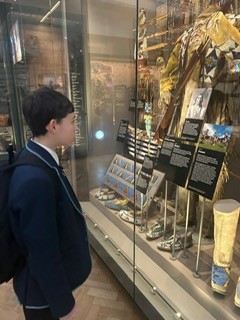Latest News
Posted on March 16th 2022
The Science of Sunscreen - For When The Sun Screams!
Ever wondered what is in sunscreen and how it actually works? Our Year 10 students were taken through a fact-finding mission recently, to understand more about sunscreens and the science behind them.
The day started with an introduction to the topic of radiation where students learnt about ultraviolet rays, and the other types of waves which make up the spectrum of light. The impact of prolonged skin exposure to UV radiation was thoroughly examined.
 The rest of the day was divided between two experiments. There are compounds in sunscreens that function to absorb UV radiation thereby protecting your skin. For the first experiment, students had to determine which of two samples of sunscreen had a greater sun protection factor (SPF). The ability of sunscreen covered beads to absorb and emit radiation was described as “fascinating.” This investigation informed them about the importance of the SPF when selecting sunscreens. By the end, one student confirmed that, “some sunscreen lotions absorb more UV light.”
The rest of the day was divided between two experiments. There are compounds in sunscreens that function to absorb UV radiation thereby protecting your skin. For the first experiment, students had to determine which of two samples of sunscreen had a greater sun protection factor (SPF). The ability of sunscreen covered beads to absorb and emit radiation was described as “fascinating.” This investigation informed them about the importance of the SPF when selecting sunscreens. By the end, one student confirmed that, “some sunscreen lotions absorb more UV light.”
Making new molecules
During the second experiment, students had an opportunity to synthesise compounds that can be used in sunscreens. They were amazed that they could actually make new molecules. This was “exciting”, in the words of one student, because “it was something we have never done before.”
The derivatives created were then analysed to determine which had the highest SPF. As some of the UV active beads covered in a solution of the new compound glowed under UV light, there was a sparkle in their eyes.
The subsequent analysis of the results led students to conclude that the quality of sunscreens is determined by their SPF. The higher the SPF, the more UV radiation is absorbed and the longer the protection. Next time you pick up a bottle of sunscreen, be sure to check the SPF.
The culminating activity was for groups of students to create a marketing campaign to highlight the benefits of sunscreen.
Astor Tate
























